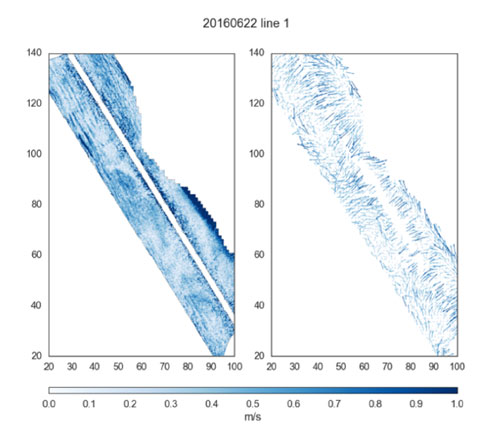Title:
DopplerScatt Instrument Concept for Simultaneous Measurements of Ocean Surface Vector Winds and Currents – First results of surface current and wind retrievals
Presenting Author: Dragana Perkovic-Martin
Organization: Jet Propulsion Laboratory / Caltech
Co-Author(s): Tamas Gal, Raquel R. Monje, Fabien Nicaise, Ernesto Rodriguez, Karthik Srinivasan, Bryan Stiles, Alexander Wineteer
Abstract:
Ocean surface currents impact heat transport, surface momentum and gas fluxes, ocean productivity and marine biological communities, as well as social impacts on shipping and disaster management. Ocean vector winds are a key variable governing the transfer of momentum, gases, and latent heat between the atmosphere and the ocean. The ability to simultaneously measure ocean winds and currents would improve the accuracy of both individual measurements, as there is an intrinsic two-way coupling between them.
DopplerScatt is a Ka-band pencil beam conically scanning airborne scatterometer was developed under ESTO’s Instrument Incubator Program (IIP). The airborne architecture is scalable to space to form the basis of the next-generation spaceborne Earth Science Mission aimed at better understanding climate, weather and ocean circulation. The first engineering and science flights with the instrument have been completed in September 2016. We will present preliminary results of surface velocities (Figure 1) and winds retrievals from test campaigns over the Monterey bay in California and the Columbia River in Portland Oregon. The presentation will also include an overview of the calibration efforts so far. 
Figure 1. DopplerScatt retrieved surface velocities over the Monterey bay in California.
Left: Surface velocity magnitude (color scale in m/s) and right: surface velocity direction for wind-corrected velocities.